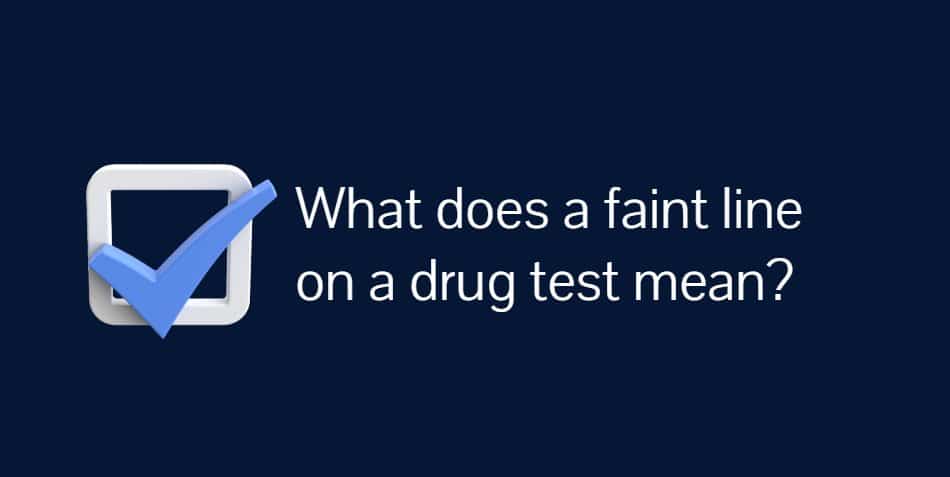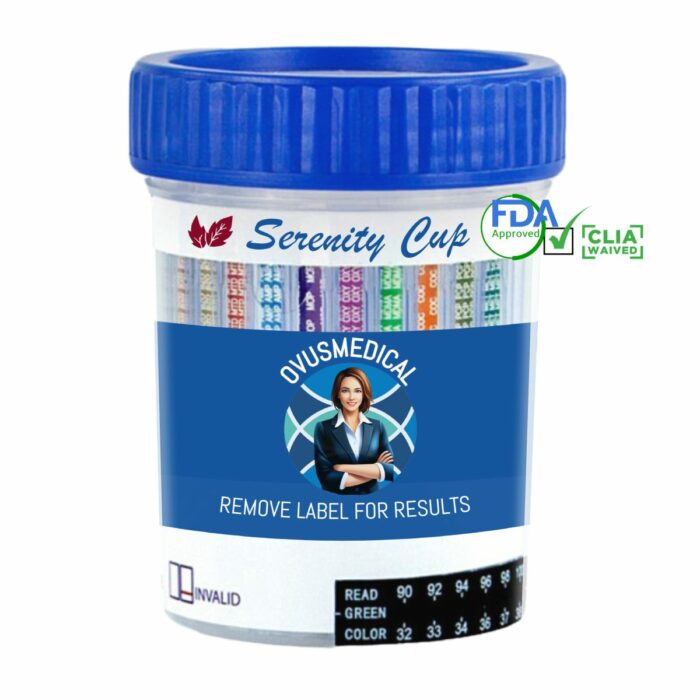What does a faint line on a drug test mean?
Do you have a very faint line on your drug test and are wondering what it means? Don’t worry; you’re not alone. Deciphering the meaning of a faint line on a drug test can be a difficult and frustrating process. But don’t worry, because in this post, we’ll decode the meaning of that whisper-thin line and put your mind at ease.
A faint line on a drug test could have various causes. It could be a negative result, indicating that the drug levels in your system are below the detection limit. Alternatively, there could be an evaporation line generated by leaving the test for too long before reading the findings. Understanding the differences between these alternatives is critical to evaluating the accuracy of your drug test.
Join us as we investigate the science of drug testing, including how they functions and why faint lines may appear. We’ll also provide you some pointers on how to interpret these results correctly, giving you the peace of mind you require. So, let us unravel the enigma and decipher the true significance of a very faint line on a drug test.

Understanding Drug Tests
Drug testing is a standard method for determining whether a person has taken drugs or illicit substances. It is frequently used in a variety of settings, including the workplace, sporting organizations, and police enforcement. These tests are designed to detect the presence of certain drugs or their metabolites in the body.
There are several sorts of drug tests, each having advantages and disadvantages. The most common types include urine testing, blood tests, hair tests, and saliva tests. These tests differ in terms of detection windows, accuracy, and the chemicals they detect. Understanding the various types of drug tests is critical for interpreting the results accurately.
Types of Drug Tests
Urinary tests: Urine tests are the most widely utilized technique of drug testing. They are non-invasive, inexpensive, and can detect a large variety of chemicals. Urine tests are typically based on immunoassay technology, which uses antibodies to identify the presence of drugs or their metabolites. If a drug or its metabolite is detected in the urine above a specific level, a colorful line appears on the test strip.
Blood tests: Blood tests are more exact and precise in determining drug levels in the body. However, they are intrusive and should only be administered by qualified specialists. Blood tests are frequently utilized in forensic investigations or when rapid drug detection is required. Unlike urine testing, blood tests can detect recent drug use by measuring active molecules in the bloodstream.
Hair tests are unusual in that they can provide a larger detection window than other procedures. This is because medications and their metabolites can be absorbed by the hair follicles as it grow. Hair tests are commonly used to detect long-term drug use, although they are less effective in detecting recent drug use.
Saliva tests are gaining popularity due to their non-invasiveness and convenience of use. These tests can identify the presence of drugs in saliva, with a somewhat small detection window. Saliva tests are widely used for roadside drug testing or in situations requiring quick findings.

How to Interpret Drug Test Results and a faint line on a drug test:
When a clear line appears, indicating a positive or negative result, it is easy to interpret the findings of a drug test. However, when dealing with an extremely faint line, it becomes more difficult to determine the genuine meaning of the results.
In most drug tests, the presence of any line, no matter how faint, indicates a negative result. This signifies that the drug levels in your system are below the detection threshold. Even a faint line indicates that the drug or metabolite concentration is low enough to be considered negative.
However, it is crucial to remember that not all faint lines indicate a negative outcome. An extremely faint line may be an evaporation line created by leaving the test to sit for too long before reading the findings. This can happen when the test strip dries out, producing a faint trace that could be mistaken for a negative result.
What Does an Extremely Faint Line on a Drug Test Mean?
An exceedingly faint line on a drug test can have several interpretations. As previously stated, it can produce a negative result, implying that the drug levels in your system are below the detection limit. This is often the case when the line is still visible, but barely so.
On the other hand, an exceedingly weak line may be an evaporation line, which is not a reliable sign of a disastrous outcome. An evaporation line forms when the test strip dries out after a long time, leaving a faint impression. This can be misunderstood for a bad outcome, causing confusion and misinterpretation.
To determine the underlying meaning behind an exceedingly faint line, several aspects must be considered, including the line’s visibility. Understanding these characteristics will help you interpret your drug test results more accurately.
Factors that can influence the visibility of the line
A variety of circumstances can affect the visibility of the line on a drug test.
These factors include:
Drug tests have variable levels of sensitivity, which means they may detect different quantities of drugs or their metabolites. Some tests may have a greater detection threshold, making it more difficult to spot a fine line.
Timing of the test: The instructions for drug tests typically specify an appropriate reading time. Reading the test too soon or too late may result in incorrect results or evaporation lines. To ensure appropriate interpretation, please follow the directions.
Drug concentrations: The concentration of the drug or its metabolite in your blood can have an impact on the line’s appearance. If the concentration approaches the detection threshold, the line may seem faint. However, if the concentration is substantially higher, the line may become more visible.
The quality and reliability of the drug test can have an impact on the line’s visibility. Using a reliable and well-tested brand can help assure accurate results while reducing the appearance of faint lines.
Consider these parameters to evaluate whether an exceedingly weak line is a true negative result or an evaporation line. It is critical to note that if you have any doubts or worries, you should speak with a healthcare expert or a laboratory to get a more exact diagnosis.
Common Misconceptions About Faint Lines on a Drug Test
Faint lines on drug tests might cause confusion and misunderstandings. Some popular myths are:
False-positive results: A prevalent misperception is that a faint line signifies a positive outcome. However, as previously stated, even a very faint line is usually considered a negative result, suggesting that the drug levels are below the threshold for detection.
Evaporation lines: A common misperception is that all faint lines are evaporation lines. A faint line can be an evaporation line; however, this is not always the case. To identify the true significance behind the weak line, other elements must be considered, such as the test’s timing and attention.
To prevent falling into these fallacies, you should educate yourself on drug testing and how to evaluate results. Understanding the science underpinning drug tests, as well as the elements that can influence line visibility, allows you to make better-informed decisions and interpretations.
When Should You Be Concerned About Faint Lines?
In most circumstances, a very faint line on a drug test is not cause for concern. As previously stated, even a faint line is deemed a negative result, suggesting that the drug levels in your blood are below the threshold for detection.
However, if you have reason to believe that the drug test was erroneous or are concerned about the results, you should seek additional confirmation. Consulting with a healthcare expert or a laboratory can help you get a more accurate diagnosis and address any concerns you may have.
Steps to Take If You Notice an Extremely Faint Line on a Drug Test
If you detect an extremely faint line on a drug test and are unsure about the result, you can take the following steps to get further information:
Retest: Consider retesting with a different drug test kit to validate the results. To achieve precise results, strictly follow the instructions and choose a reputed brand.
Consult a healthcare professional. If you have any doubts regarding the test’s accuracy or the interpretation of the results, you should see a healthcare expert or a laboratory. They can provide you more accurate assessments and answer any questions or concerns you have.
Tips for Accurate Drug Test Results
To ensure reliable drug testing results and reduce the frequency of faint lines, consider the following tips:
Follow these instructions: Read and follow the directions included with the drug test kit. Pay attention to the specified testing time and any specific interpretation recommendations.
Select a renowned brand. Use drug test kits from reputed companies to ensure accuracy and dependability. Conduct research and read reviews to locate a brand that has been tried and proven to deliver reliable results.
Perform the test in the proper environment. Make sure to conduct the drug test in a clean, controlled atmosphere. Avoid severe heat, humidity, and any other factors that may compromise the test’s accuracy.
Take numerous exams. If you are unsure about the results or want to confirm their accuracy, consider taking multiple tests at different times. This can contribute to a more comprehensive assessment and lessen the possibility of misinterpretation.
By following these guidelines, you can improve the accuracy of your drug testing findings and reduce the appearance of faint lines.
Conclusion
Decoding the meaning of an exceedingly faint line on a drug test can be a difficult undertaking. However, by understanding the science underpinning drug testing, the many types of tests, and the elements that can influence the line’s visibility, you can draw more informed conclusions.
Remember that even a very faint line is normally considered a negative result, suggesting that the drug levels in your blood are below the detection limit. However, if you have any issues or worries regarding the test’s accuracy, you should visit a healthcare practitioner or a laboratory for further evaluation.
By following the suggestions for accurate drug testing results and being aware of common myths, you can confidently and peacefully traverse the world of drug testing. Don’t allow a very faint line on a drug test to lead you to worry; instead, be informed and make decisions based on the correct facts.
You may also like…
-
10 Panel Drug Test Cup
As Low As $1.89
FDA/Clia Waived
$2.89 Info & Price This product has multiple variants. The options may be chosen on the product page -
12 Panel Drug Test Cup TCA
As Low As $2.29
FDA/Clia Waived
$3.09 Info & Price This product has multiple variants. The options may be chosen on the product page




